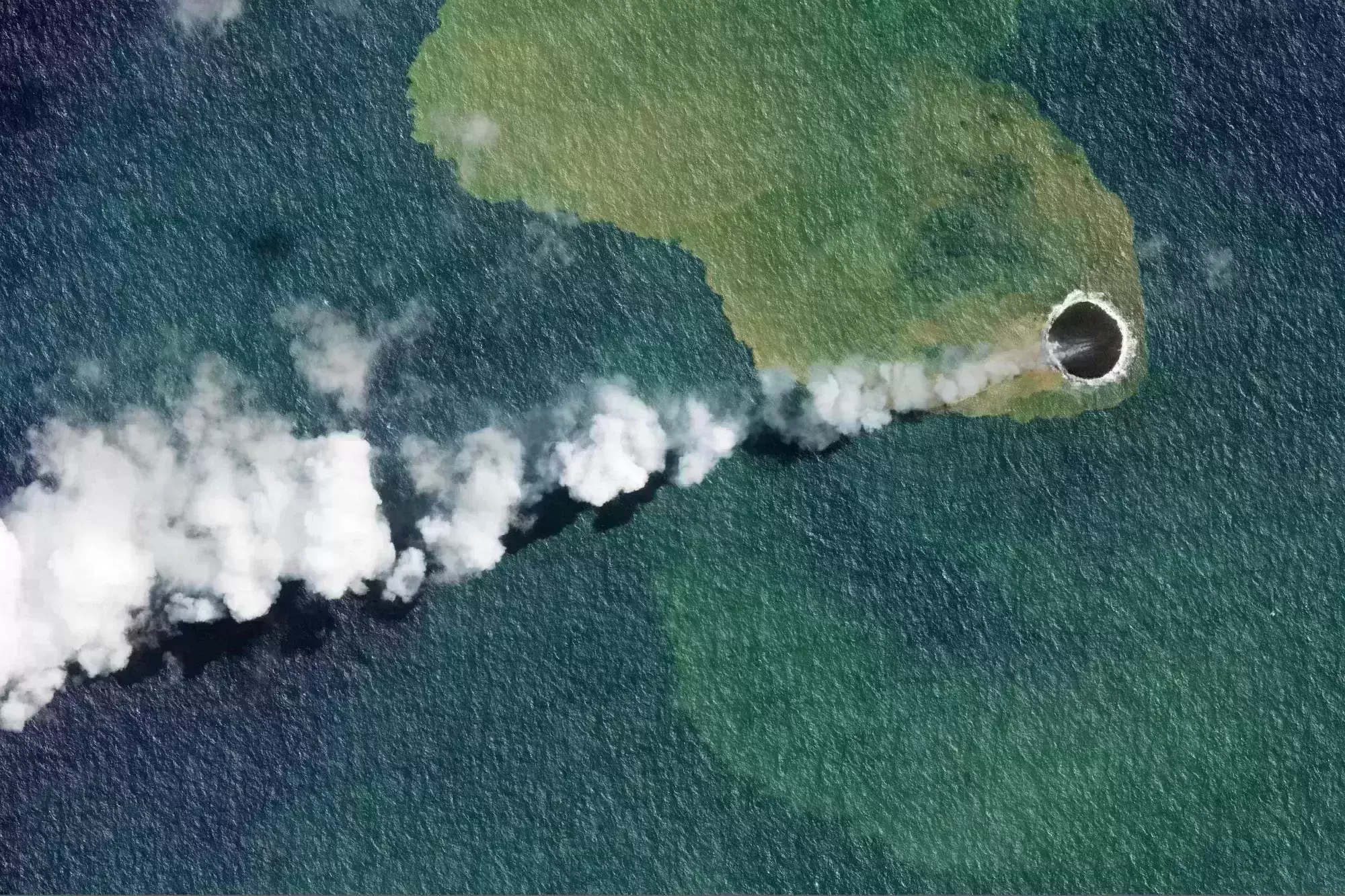
New baby island found in the Pacific Ocean after volcano eruption
text_fieldsThe Home Reef underwater volcano located in the Central Tonga Islands started erupting earlier this month. Eleven hours after the eruption, NASA found a new island that formed not far from Australia.
The new piece of land is sitting on the Home Reef seamount in the Central Tonga Islands, southwest of the archipelago's Late Island.
According to the space agency, the new island emerged above the water's surface and started growing in size quickly. On September 14, experts with Tonga Geological Services estimated the area of the island to be 4,000 square meters (1 acre) and the elevation to be 10 meters (33 feet) above sea level. In the next six days, the island grew to cover 24,000 square meters (6 acres).
As of Monday, the volcano is still erupting which makes it too early to predict the island's future. According to the Tonga Geological Services, the volcanic activities at Home Reef Volcano in the last 24 hours is progressive with 21 volcanic events. It poses a low risk to the aviation community and residents of nearby island groups.
In a press release, NASA said that islands created by submarine volcanoes are often short-lived and occasionally last for years. The new island may or may not be around for a while. Recalling past examples, the US space agency said in 2020, an island created by Late'iki Volcano washed away after two months. In 1995, an island created by the same volcano remained for 25 years.























